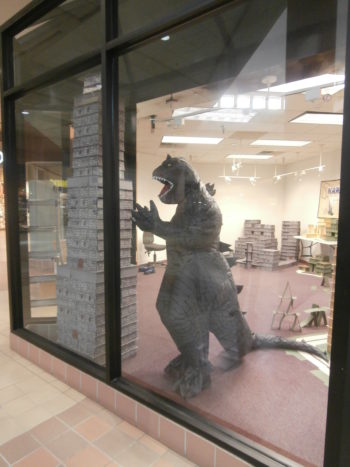
In our Friday Fun Facts we have mostly covered relative links to the notion of building. But the Kardtects building system offers just as much fun in the destruction. Unlike most construction toys, when the concept of breaking your building down is almost a chore, Kardtects is simple, quick and, more importantly, FUN!
No matter what the scale, although it’s easy to say bigger is better, it can take just a single strategic nudge and an entire tower can collapse, all cascading in on itself, leaving just a pile of loose cards.
So it’s seems rather apt to look at other famous moments of destruction and see what facts can be found. Although, these normally are moments of tragedy for those involved, these moments shape so much of our history, and at times our language.
For example, did you know there was no word for a Volcano, it was first used to describe Mount Etna by the Romans, who believed it was the forge of Vulcan. At the times of the Roman Empire, they didn’t know what a volcano was, but with the eruption Mount Vesuvius on 24th August 79AD, and the subsequent loss of the Roman City of Pompeii, the word Volcano was linked to these exploding mountains.
Here are the top 10 facts of destroyed city of Pompeii:
- The eruption happened the day after the religious festival of Vulcan, who was the Roman god of fire.
- The eruption that destroyed Pompeii lasted for more than 24 hours.
- The initial ‘mushroom’ cloud that shot out from the volcano would have made a column that reached over 20 miles into the sky.
- It has been estimated that the steam-rivers that ran out of the volcano would have moved down the mountain side at an astonishing 450 miles per hour!
- The heat from these lava rivers would have been around 1,830°F or 999°C. Hot enough to set almost anything alight almost instantly.
- Mount Vesuvius is still thought to be one of the most dangerous volcanoes around the world and is the only active volcano on the mainland of Europe.
- Pompeii was rediscovered almost accidentally when its location was found in 1748 when builders were constructing a palace for King Charles III. No-one tried to re-build Pompeii after the eruption, as was usual after a natural disaster, this was because the city had been buried in over 14 foot of ash and the damage was too great.
- Our knowledge of the destruction of Pompeii is mostly due to the letters written by a man called Pliny the Younger, who witnessed the eruption, but also spoke to survivors and asked them about their experiences. The type of eruption from Mount Vesuvius is now known as a Plinian eruption (after Pliny the Younger’s description of it). A plinian eruption doesn’t commonly include a lava flow, but a pyroclastic flow which contains hot steam, rock, ash and dust.
- Pompeii wasn’t the only settlement destroyed by Mount Vesuvius’s eruption in 79AD. Herculanium and Torre Annunziata were also destroyed. It is thought that of 20,000 inhabitants of Pompeii and 5,000 inhabitants of Herculanium, around 16,000 people died in the destruction of Pompeii. These people didn’t evacuate immediately after the volcano erupted and then became caught by the toxic clouds of volcanic ash and dust and the pyroclastic streams.
- Mount Vesuvius erupted most recently in 1944, but it wasn’t as powerful as in 79AD. It has a history of having a catastrophic eruption every 2,000 years or so… and it is almost 2,000 years since 79AD!
Below is a video of a Kardtects Card House going up, AND coming down! The Kardtects Destroyer Disks are thrown into the card structure to knock it down. LOTS OF FUN!
